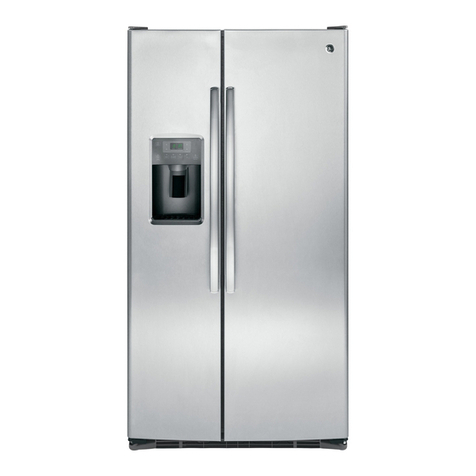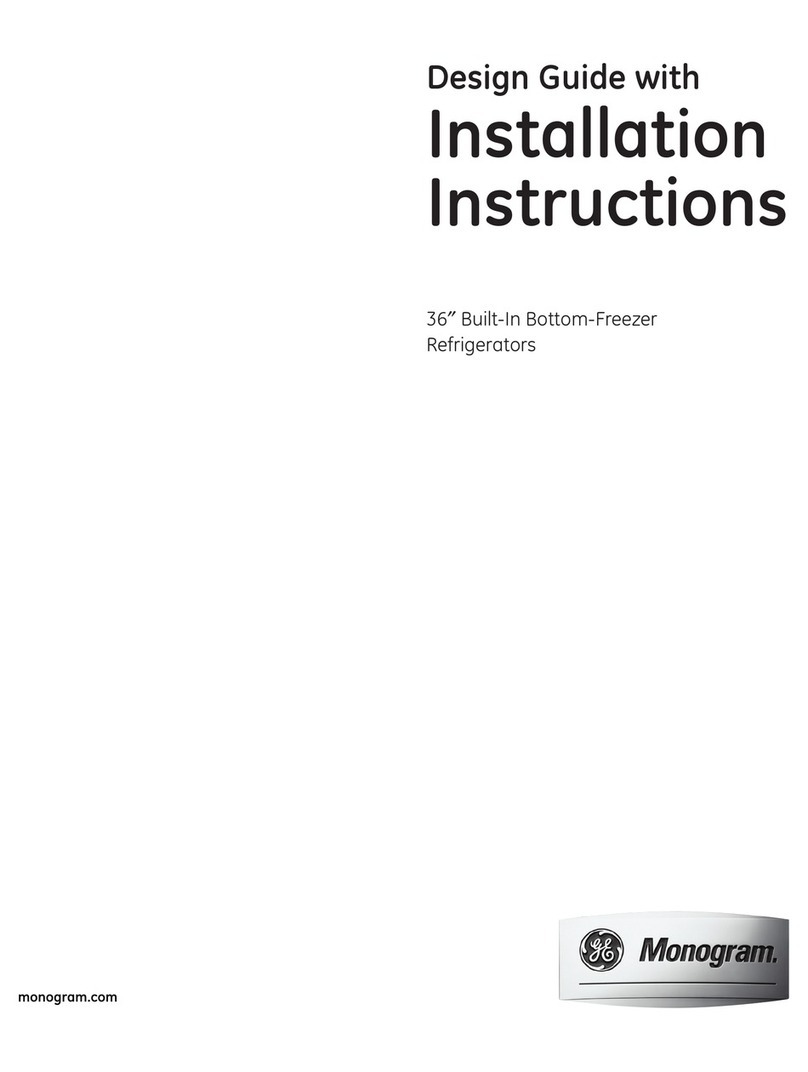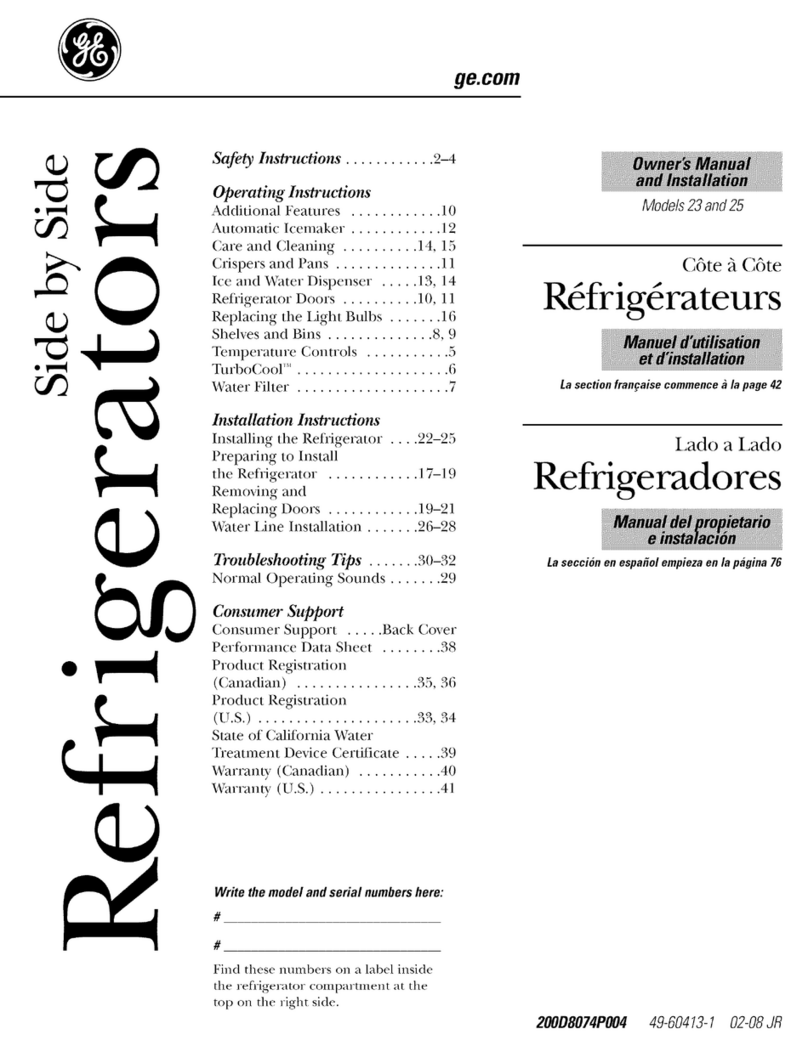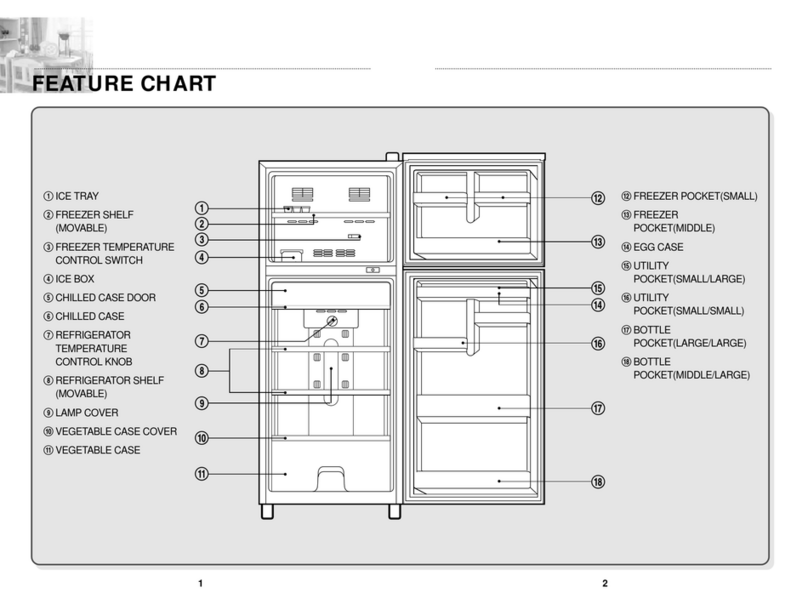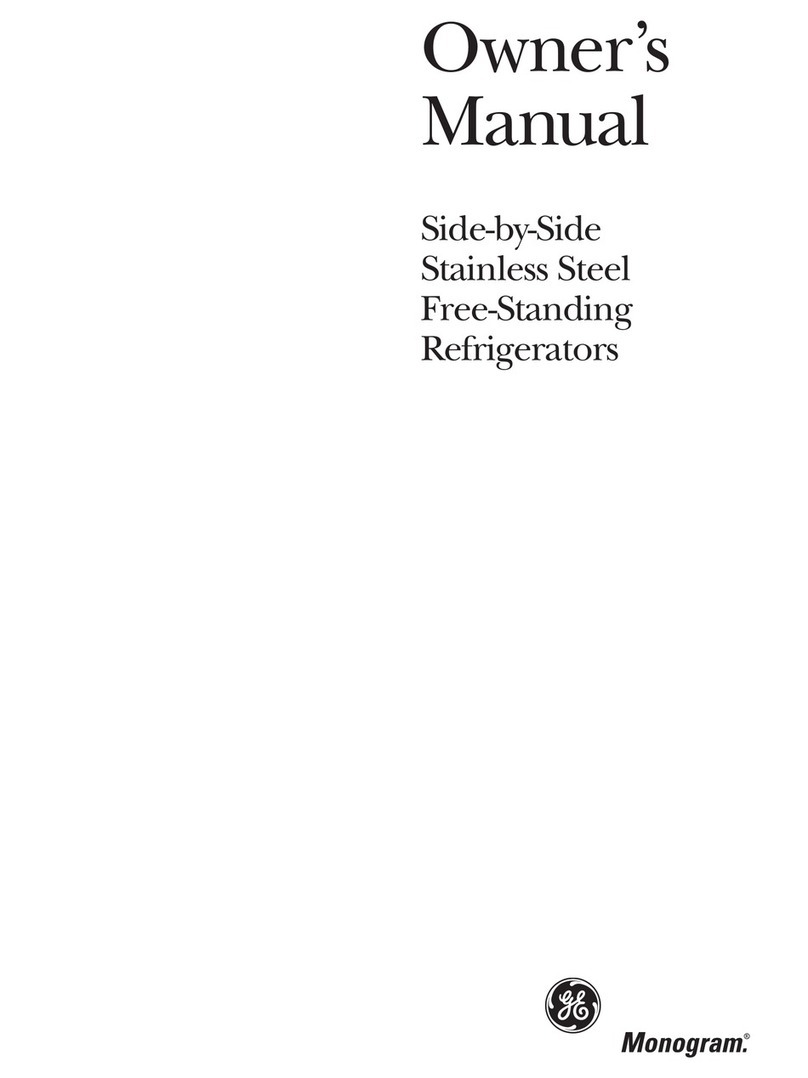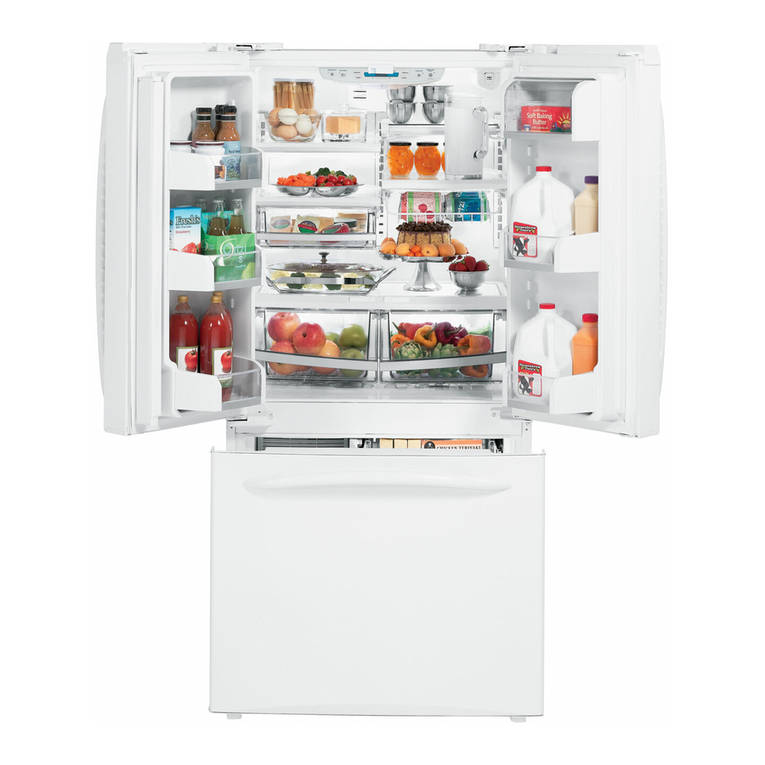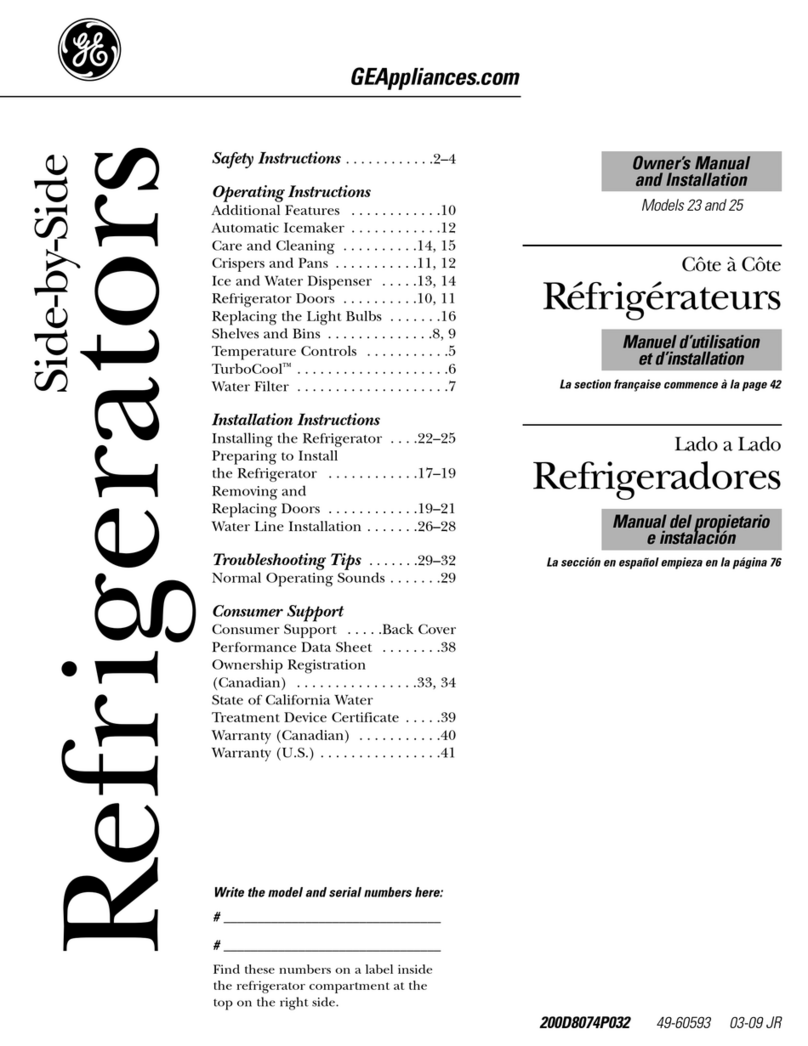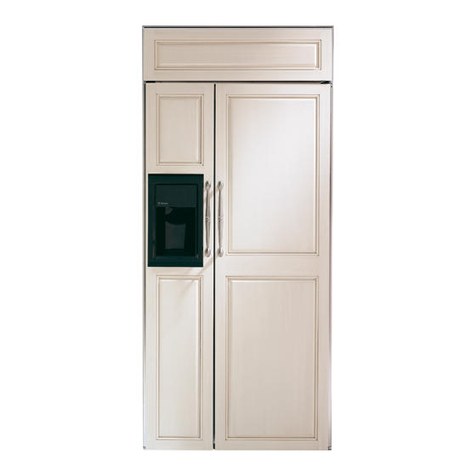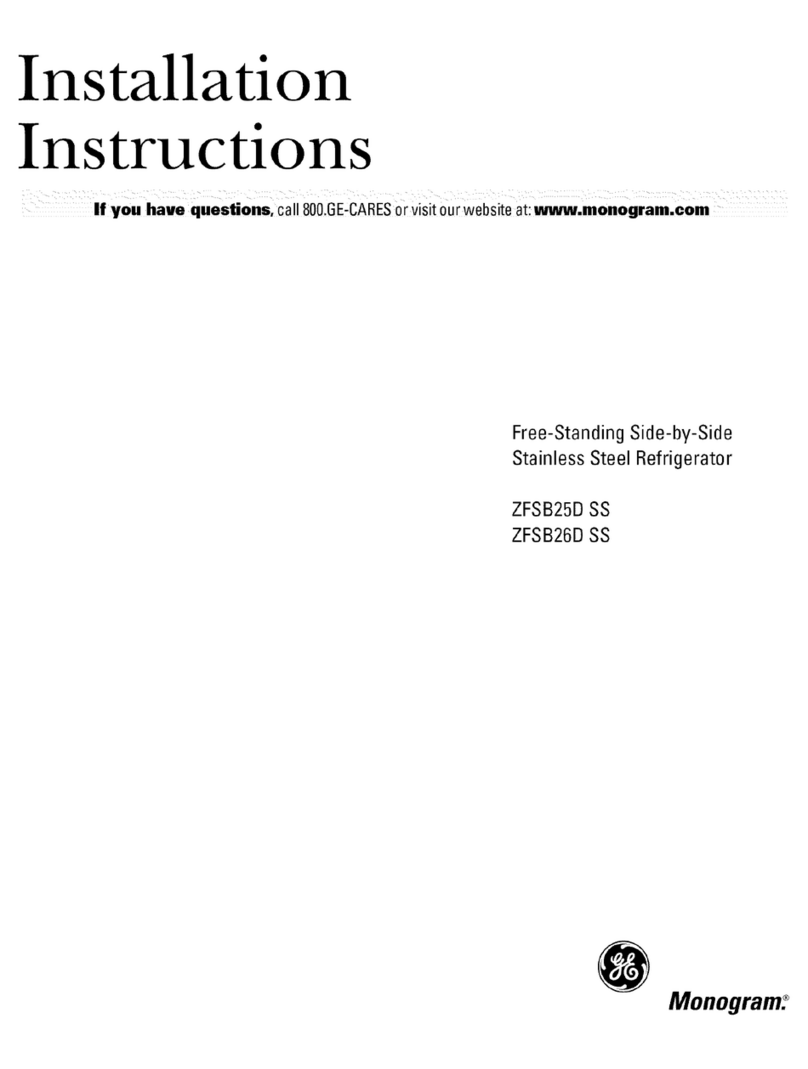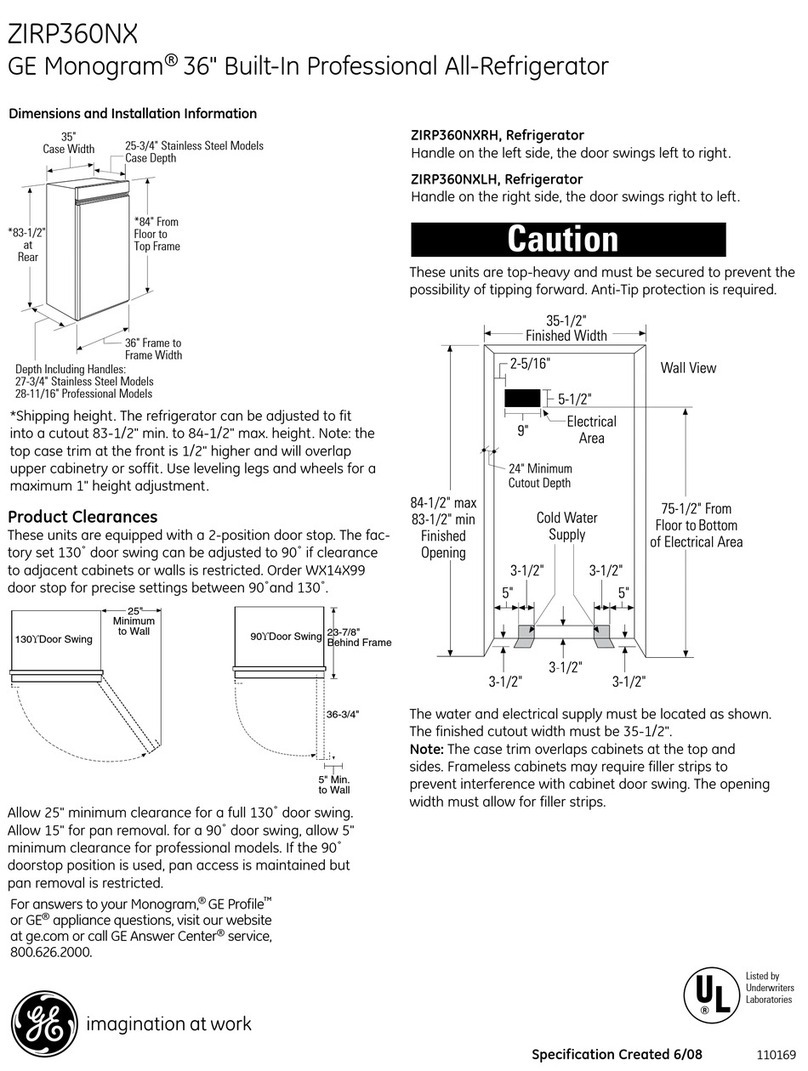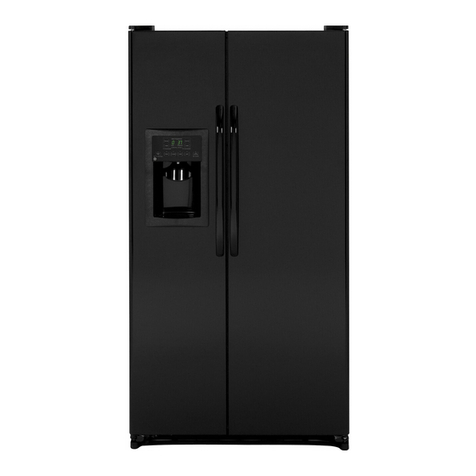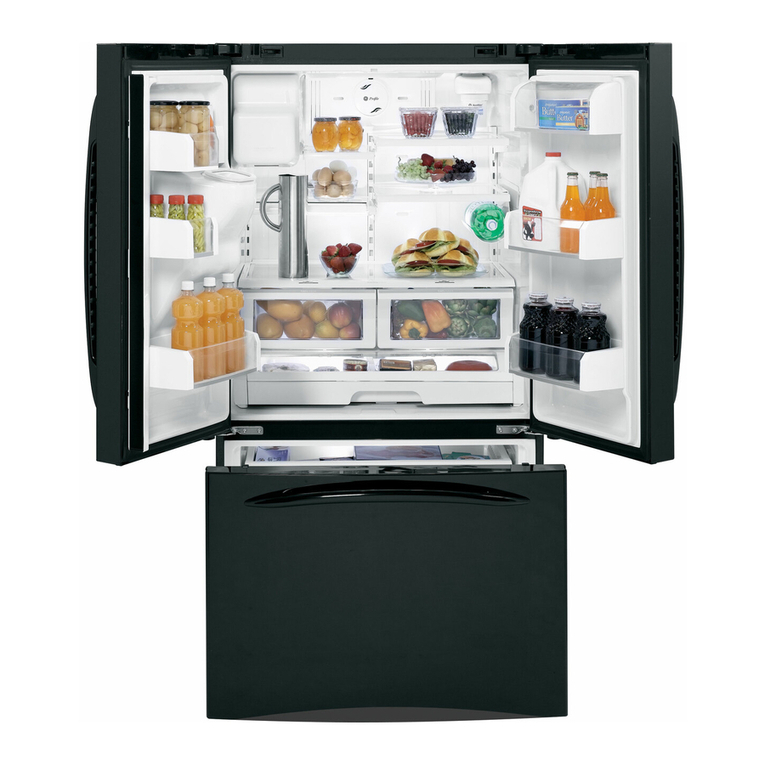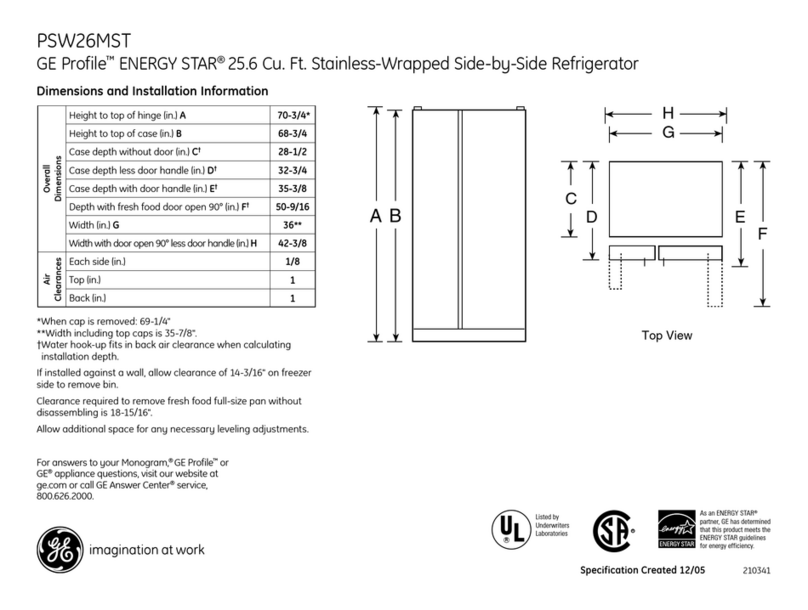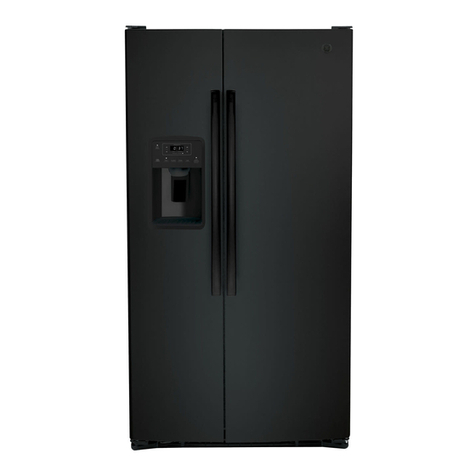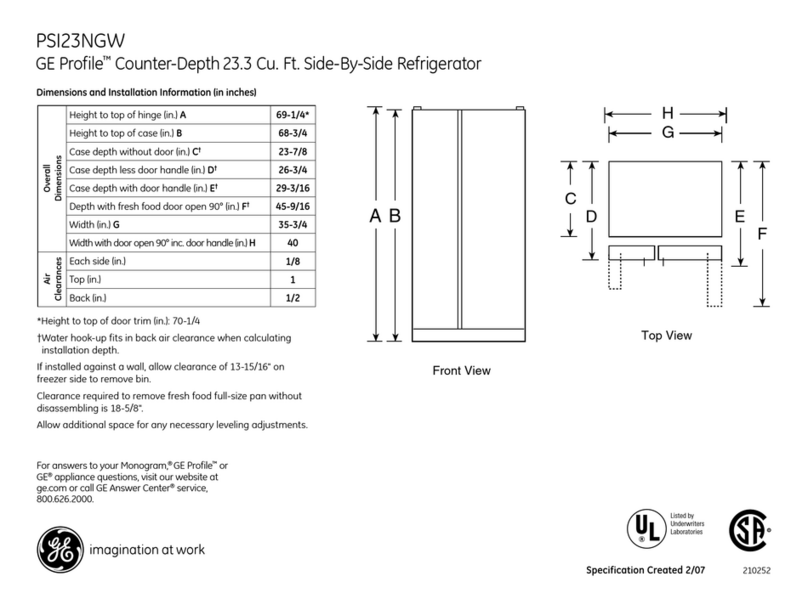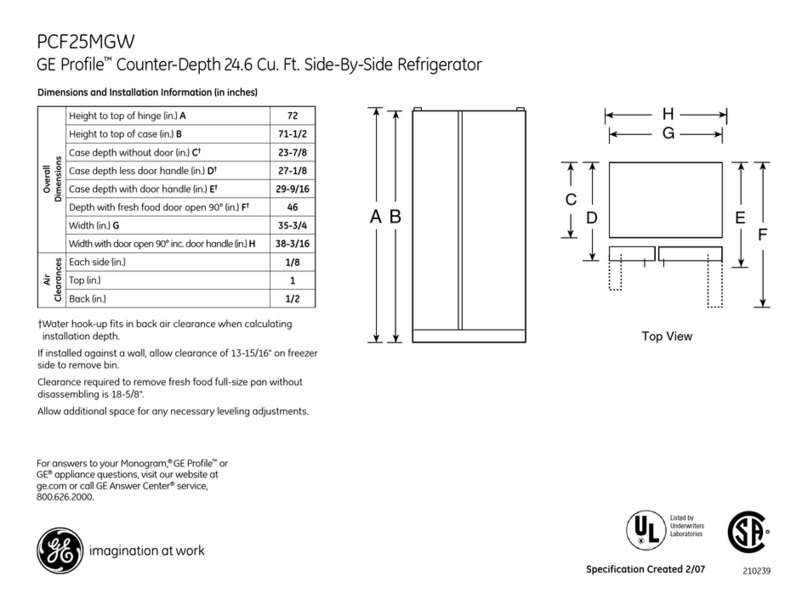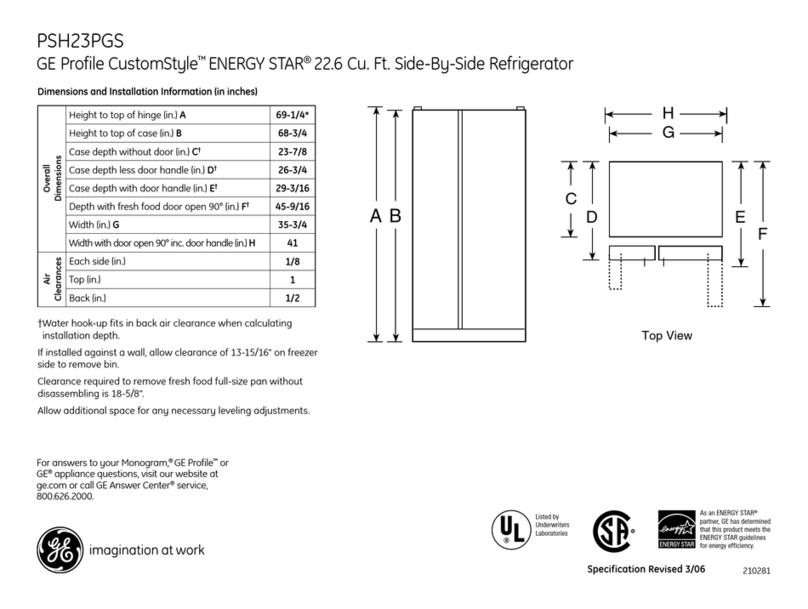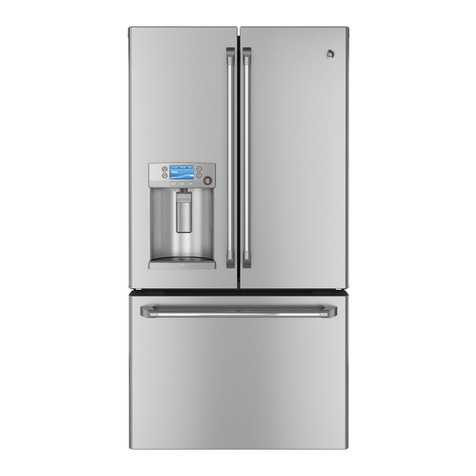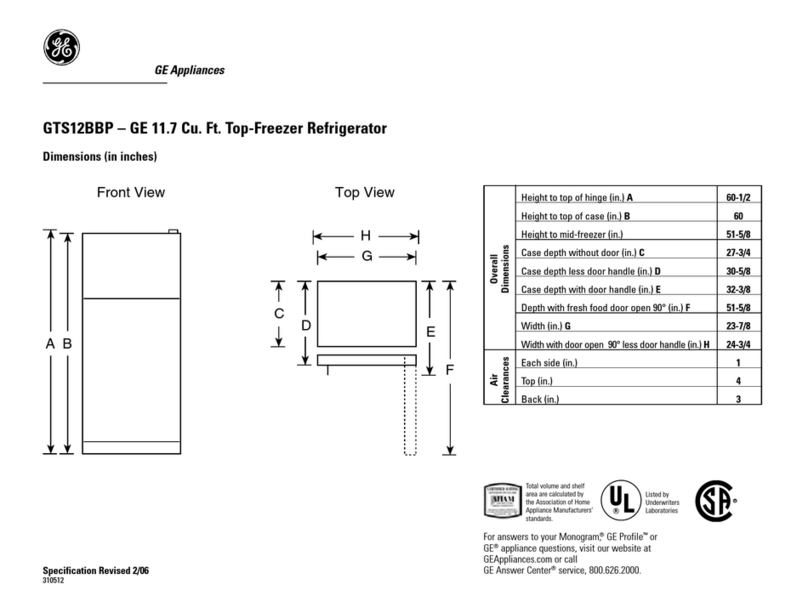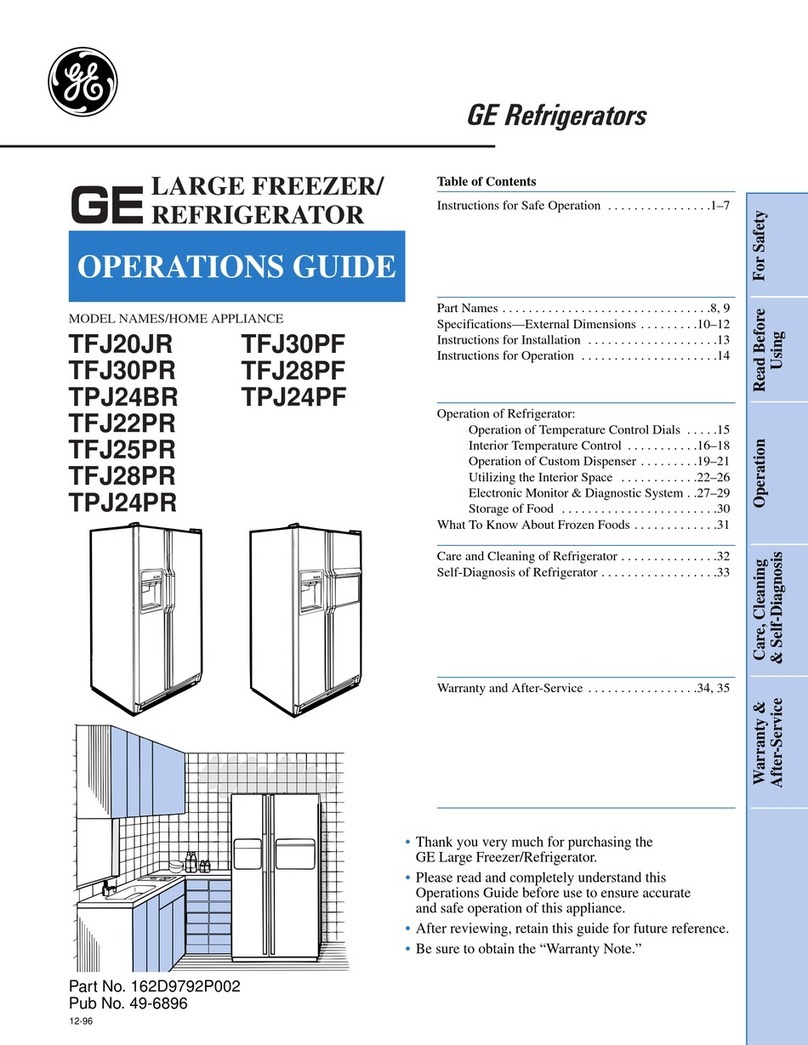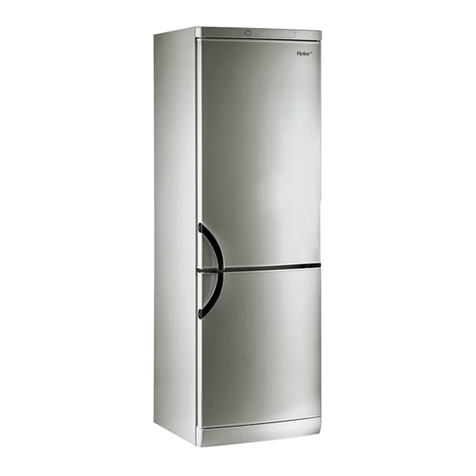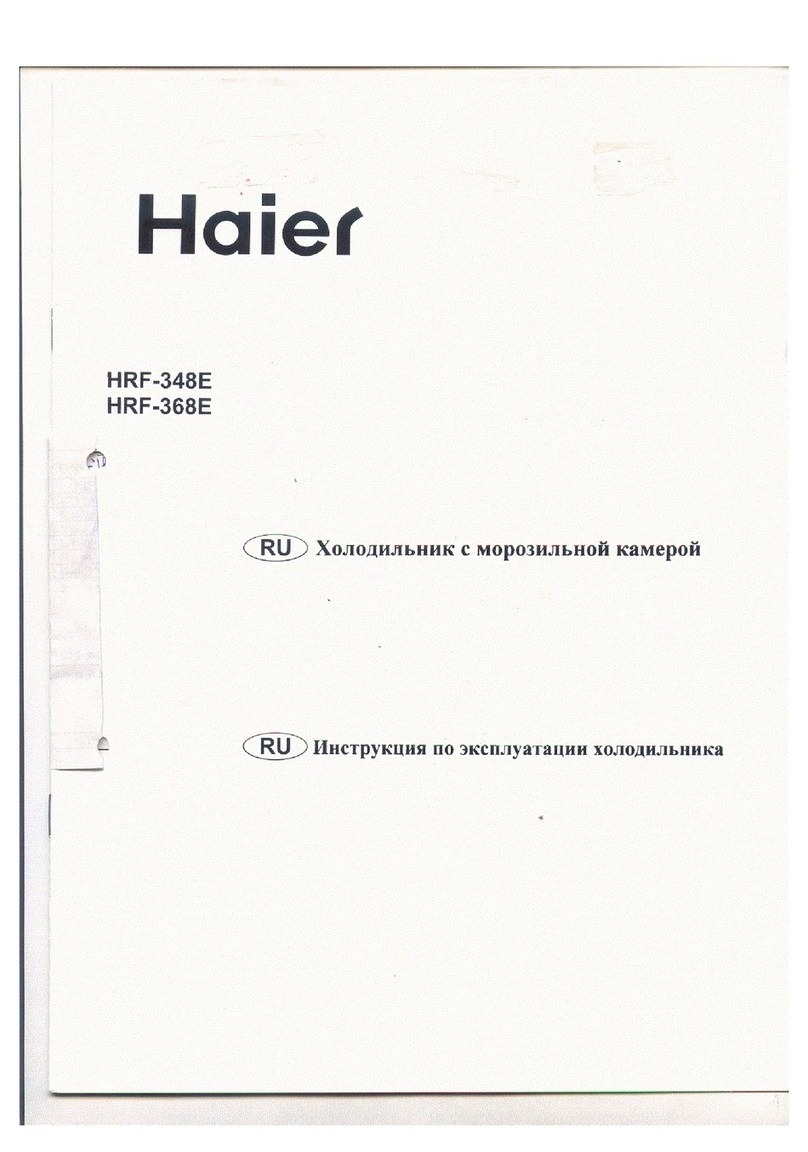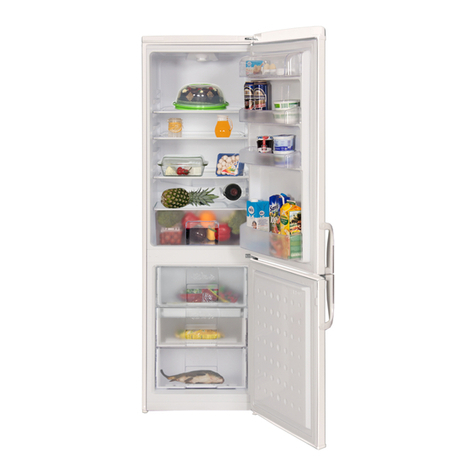....
-.
-.X
—<=
—
..
.(continued) —
.
—
-— ~Hyour refrigerator hasan
automaticicemaker, do not place
fingers or handson the automatic
icemaking mechanismwhile the
refrigerator’isplugged in.This.will
prevent contact with th~.moving
parts of the ejector mechanism,
or with the heating element that ~
releases the cubes. ‘.$
and should not be eaten, Thawed ~
ice cream should be discarded, If
the odor or color of anyfood is
poor or questionable, get rid of it.
The food maybe dangerous to eat.
“Even partial thawing and re-
freezi~g reduce the eating quality
of foods, particularly fruits, vege-
tables, and iore~ared foods. The
Unplugyour refrigerator:
A. Before making any repairs.
/,. t , .’ ea(ing quality of red meats is
0Don’t refreeze frozeh fO@S, <,-: affec~ed,less than that of many ~
which have thawed qornp~$$tqly;.-: ~
The United St~tes Departm-ent of ~Qther foods. Use refrozen foods ~
Ag,ricuRure in Home and”~ard~’n”, as soon+m possible to,save as
Builetin No; 69says; .‘ ),- ;,’. Much of their eating quali{y.as “
yqu +in.” ‘;: , ~,<
“... Youmaysafelyrw’freeie ~rozen ~..,
foods that h@e’thawed if;(he~titili: ~‘:!f’ ybur bld.refrige~atqris‘still ,
contain ice crystals ,o?.ifthe$(afle .s.aroq’qcf,the~,ouse’t@t’notinj.me, ~‘
~qDo noto’peratqyour refrigerator
“be sure to rem,ovbth,~’doors.This..
sti// ~o/d—-be/oW40°,F ~²½•(³½•‘“:‘,: :,; ‘.”:: ~,- “i,nthe presenceofpxplosivefumes.
“... Thawed’gr@ndmeatsjp6u ftry1 ,,~ijj +~uc~,tpe. ~os$i.bility Of:~~•.I-,, ‘ ‘ ~:, ;.’, ~~,,,,~, ,; ‘,
or fj~h that ha-ve~off-od~f “o~. ~;, -dptigpr;to,ch~ldreri.::;,‘.‘,”:‘“’‘“’’(’”.~.“.,,:,~ .,,, ;., .,.,~ÿÿÿÿÿÿÿ,
.,
off-color~hou~~nofibe ~efrqz:e~ .. ~“ ‘.’, ;. ~‘.”,-:~‘. ‘.,~‘~ ‘,, -:’:: “..,. ~,, ‘ ‘ ‘i.: “’<‘,“),.. , ,
.$ ,.. ..’
., -. . >.~?,-
,.-,.~-,.> ,, .r
:,, ‘,. !. , ., , ‘.
. . ,. ‘.,, ,.
,, ~z
-. ,.
., ‘, ,, .,
,. . , >.’ ., .
,,
Note: Westrongly recommend
that any servicing be performed
by aqualified individual,
ELBefore cleaning,
C. Before replacing aburned-out
light bulb, the refrigerator should
be unplugged in order to avoid
contact with alive wire filament,
(A burned-out light bulb may
break when being replaced, )
Note: Turning control to OFF
position doe$ not remove power
to the light circuit. ‘
For safety,
this mustbe
The power cord of this appliance
is equipped with athree-prong
[grounding) plug which mates with
astandard three-prong (grounding)
wall receptacle (Fig. 1)to mini- -
mize the possibility of electric
shock hazard from this appliance.
PllEFEFif?EDMETHOD
IFig. 1
>
‘*
(Q
..\’9
%
---
a“)
).:,..
\
‘----
~
l~suREPROPER
GROUNDEXISTS
BEFORE
USE
.. . . ,. ,
.0
Where asta;dard two-protifj wail
receptacle is encountered, it is ,
the personal responsibility and
obligation of the customer to
have it replaced with aproperly
grounded three-prong wall
receptacle.
DO NOT, UNDER ANY CIRCtJM-
STANCES, CUT OF? REMOVE
THE THIRD [GROUND) PHONG
FROM THE POWER CORD.
useof
Because of potential safety
hazards under certain conditions,
we strongly recommend against
the use of an adapter plug.
However, if you still elect to use
an adapter, where local codes
permit, aTEMPORARY CON-
NECTION may be made to a
properly grounded two-prong
wall receptacle by the use of aUL
listed adapter (Fig. 2) which is
available at most local hardware
stores.
2
TEMPOFIAfl;METHOD
(ADAPTERPLUGSNOTPERMITTEDINCANADA)
h-=.>
The larger slot in the adapter
must be aligned with the larger
slot in the wail receptacle to
provide proper polarity in the
connection of the power cord.
CAUTION: Attaching adapter
ground terminal to wall recep-
tacle cover screw does not ground
